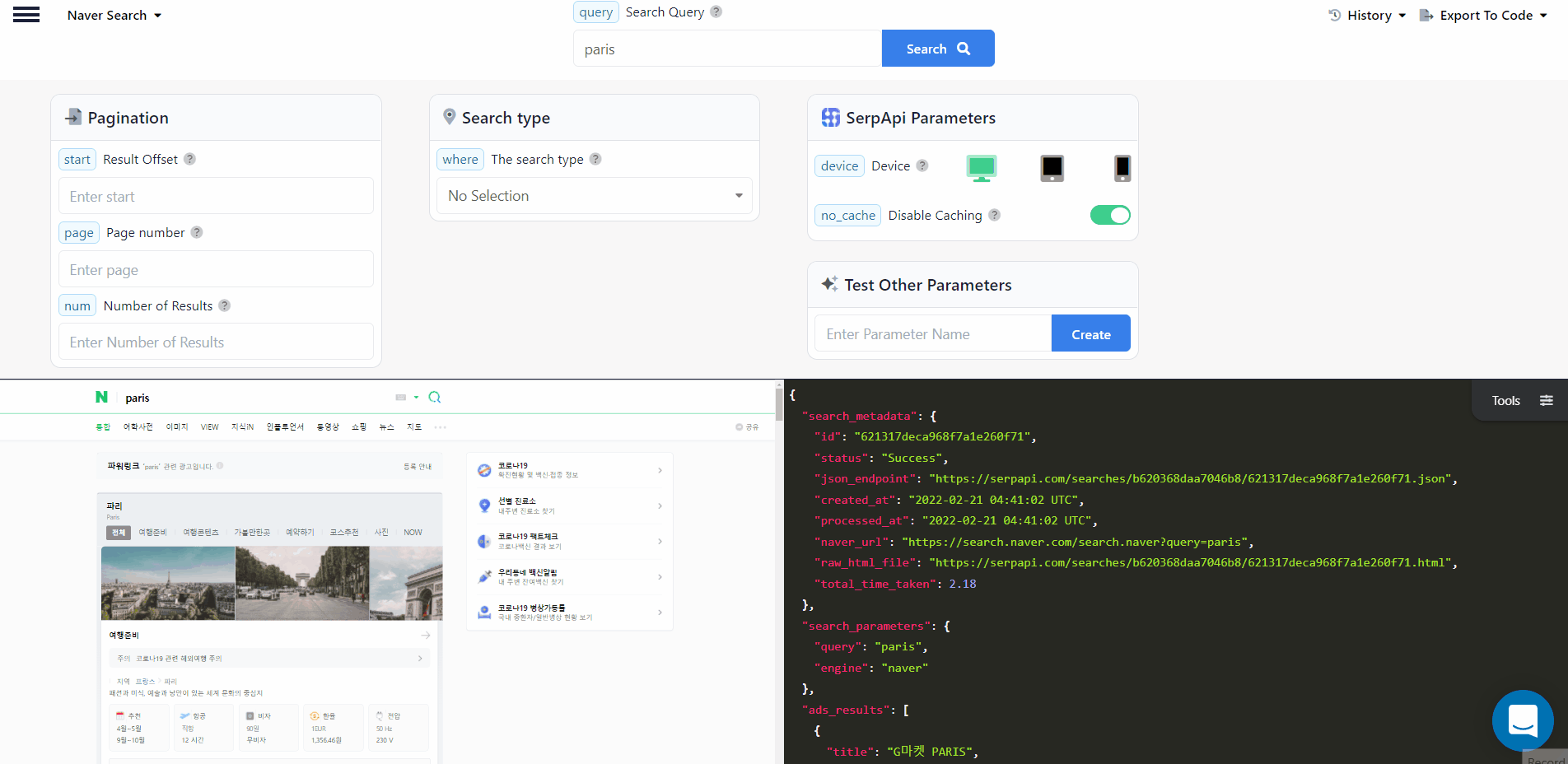About Naver
As we know, the Naver engine handles 74.7% of all web searches in South Korea, which might be the same number for Images API in Naver.
Naver developers put huge effort in developing and improving their engines, including the Images API itself. As we worked on scrapping their engine, we suffered from the continuous updates and improvements on their engine as we have to stay up-to-date as well to maintain the uptime of our service.
About Naver Images API
As mentioned above, recently we added the Naver Images API to our supported engines. SerpApi is the first company in the world to support Naver Images API as a separate, fully supported engine.
The documentation contains general information such as the parameters and the output keys.

Like the rest of the Naver API, we have the where parameter which is the main parameter for all Naver API, This parameter is required

We must set the where Parameter to image if we want to use Naver Images API.
And finally, we have the query parameter which represents the search query parameter.
Playground
Now we will go to the Playground on the SerpAPI website to test the engine. We will search for coffee and check out the results:

- We select the engine from the top left.
- We select the search type using
whereparameter. - We enter the search query we want.

This will be the result of rich JSON. In the JSON there are very useful keys, we can get into some of them:
total_resultsthis key represents the total amount of the results found for your search query.images_resultsthis key represents the results per image.prettify_html_filethis is the HTML file as it appears in the screenshot above on the left.naver_urlthis is the actual Naver search engine link for the query you made.json_endpointthis is the most important and as in the rest of SerpAPI engines, it's the JSON output file URL.

Pagination
Let's not miss the Pagination parameters, in SerpApi we support most of Naver's Search engine parameters, and it's not limited to pagination, let's put the spotlights here on the pagination.
As you can see in the screenshot above, we support three parameters for Naver Images API.
-
startParameter controls the offset of the organic results. More info... -
pageThe page parameter does the start parameter math for you! Just define the page number you want. Pagination starts from 1. -
numParameter defines the maximum number of results to return. 50 (default) returns 50 results. Maximum number of results to return is 100. Parameter can only be used with Naver Images API.
You will find the start and num parameters in the actual Naver engine, but you won't find page parameter, this parameter is provided by SerpApi and you won't find it anywhere else, the page parameter can make the developers who use the SerpApi shortcut a lot of work on their automated tools and SEO tools.
All the pagination parameters are Optional to use and not required, of course, you can read more detailed documentation about Naver Search engine parameters directly on our documentation page.
Finally, by the numbers and how easy to use it, and the information it provides,
we can say Naver Images API is the biggest and best alternative to Google Images API.
If you use Google Images API, then I highly recommend you to test Naver Images API on SerpAPI.
Ending
Together we will continue discovering the Naver search engine with SerpApi.
Don't miss our other Naver blog posts:
Scrape Naver video results with SerpApi
SerpApi's Naver search API
- You can sign-up for SerpApi here: https://serpapi.com/
- You can find the API documentation here: https://serpapi.com/search-api/
- Documentation on Naver Images API.
- You can follow us on Twitter at @serp_api, to get our latest news and articles.
